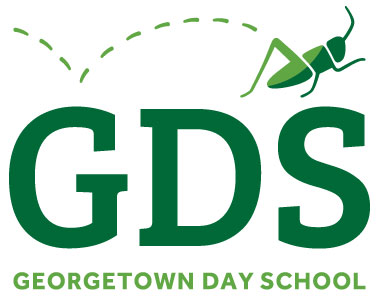Finding an ideal school for their children is one of the most fraught journeys a parent will take. Throw in a global pandemic in which the very notion of school has been upended, and the task of even imagining what “ideal” looks like becomes orders of magnitude more difficult. Parents and educators alike have had to shift gears in real-time to ensure that students continue to have the balance of structure, support, challenge, and encouragement necessary for them to thrive.
This “pivot” to virtual teaching and learning has been jarring, but we have seen private schools make this pivot more successfully than our public school counterparts, for a number of reasons. To start, private school class sizes have always been small, so those schools were able to maintain meaningful connection to students and families at a time when it has mattered most. In addition to that, there is an issue of scale—scaling up resources to ensure that students across an entire school district have the technology and access they need is gargantuan next to the task faced by individual private schools. And of course, given the tuition-driven nature of private schools, the resources available in the first place vastly outstrip what even excellent public school districts are able to provide.
And speaking of tuition: This year’s admissions process at independent schools may be largely virtual, but the opportunities—and the costs—are very real. In the process of selling the value proposition of independent schools, a question I face quite often is, “How much does your school cost?”
Of course, it’s an important and reasonable question. Parents deserve to know the literal value of our schools as they make decisions around one of the largest investments they will make in their children’s lives. And yet, I fret because I know that the sticker shock caused by some of our independent school price tags can be discouraging to many families who would enhance our communities in a variety of ways.
This is why I approach my conversations about financial aid as being not merely logistical. For independent schools, the financial aid conversation is one that requires alignment around a values-based process, an intentional approach to stewarding and allocating financial aid funds, and helping families manage the explicit and implicit notions of what to expect as recipients of financial aid. Let me dig a bit deeper on each of these, with the aim of pulling back the curtain a bit on what can seem like a mysterious and daunting prospect for families considering applying for financial aid.
Further Reading
What is financial aid? (And what is it not?)
Financial aid at independent schools exists for three primary strategic reasons: 1) to provide points of access for a socioeconomically diverse range of families who might otherwise be unable to consider our schools; 2) to support enrolled families who, due to unexpected circumstances, may require new and often temporary assistance in order to remain at the school; and 3) to provide schools with flexible options to meet their enrollment goals, even if it means discounting the cost of any remaining available spaces. While my focus in this post is on strategic reason #1, each of these goals matters greatly to supporting sustainably accessible schools.
Our philosophy at Georgetown Day School is to assess a family’s financial picture as conveyed through their financial aid application and to then meet 100% of their demonstrated financial need. Because each school has different financial capacities, and because virtually all of our schools are constrained by budget considerations and the desire to serve as many families as possible, not every school will find itself in a position to fund 100% of a family’s demonstrated need. This should be a question you ask at all schools to which you are applying if you will also be a candidate for financial aid.
What is financial aid not? For starters, it is not necessarily the same thing as a scholarship. There are indeed independent schools that offer scholarships, typically for students who demonstrate exceptional merit or talent in relation to other applicants. Sometimes these scholarships are financially need-based, and sometimes they are not, depending on the school and the unique strategies it has made to attract a mission-aligned student body. Also, unlike in higher education, financial aid awards at K-12 private schools are not typically issued as loans and are therefore not intended to be paid back to the school.
What does the financial aid application process entail?
In order to align a philosophy of financial aid with the actual allocation of funds for families, there must be a process that is transparent, objective, and timely. At virtually all independent schools, the financial aid application is a separate but parallel process that requires families to submit their financial information to the school, most often through a third-party vendor that undertakes the technical work of the financial aid assessment.
These third-party organizations (such as TADS, SSS, and FAST) use the information provided by a family on their financial aid application and incorporate it to a formula that considers inputs such as income information as verified by W-2s and recent pay stubs, tax returns (including business returns for self-employed parents/guardians), estimations of housing and energy expenses, primary and secondary real estate assets, savings (both liquid and non-liquid), retirement account savings, medical care expenses, day care expenses, etc.—all of which compose a picture of a family’s financial circumstances. Some systems such as TADS also invite families to provide additional documentation that might explain extenuating family circumstances that are not easily captured numerically. The end result of this assessment is an estimate of the amount a family can reasonably expect to pay towards educational expenses. Schools then use this information as the starting point to determine what level of aid they might provide a family.
Schools generally require financial aid applications to be submitted around the same time as admissions applications, and I encourage you to be fastidious about meeting the deadline. This is because the financial aid assessment itself takes time, and schools have a series of decisions to make with regard to admissions and financial aid in a compressed timeframe before making their offers of admission to new families in the early spring. Given the nature of our schools’ budgets, it is not likely that significant amounts of financial aid will remain after the initial round of new admissions offers.
Parents sometimes ask me if they should even go through the process of applying for financial aid. This question may arise because they know that their incomes are somewhat higher, sometimes significantly, than regional averages, and they are genuinely unsure if they would be eligible to receive aid. They furthermore want to know if applying for financial aid will affect their children’s chances of admission. To those families I say two things:
First, if there is any question in your mind at all about your ability to meet a school’s tuition burden, you should apply for financial aid and let the process determine the outcome. You will have more information at the end of that process than when you started. While not every applicant for financial aid may qualify for tuition assistance, you should know that there are a wide range of household income profiles that do qualify for financial aid based on several other financial considerations beyond income. For this reason, there is no clearly discernible “cutoff” for incomes when it comes to households who qualify for financial aid.
Second, regarding whether applying for financial aid will affect your child’s chances of admission, the answer is, it’s complicated. While Georgetown Day School and several other schools employ a need-blind admissions committee process to determine the best candidates for our school, our reality at the end of the day is bound by a finite financial aid budget that leads us to make some difficult choices regarding the families for whom we will actually allocate funding. And while some schools use a financial aid waitlist—in which a student is offered a space at the school, even as the required financial aid is not presently available—Georgetown Day School does not; this is based on our philosophy of 100% support for a family’s demonstrated financial need for students who are admitted to our school.
What to expect next
Even after having successfully navigated the various stages of the financial aid application process, families may still have unanswered questions about what they can expect from a school, what the school expects from them, and what they should feel entitled to should they decide to enroll.
Families can expect that the conversations about and determination of financial aid are held in the strictest confidence and are generally only known by a small group of senior administrators at the school. Schools expect families to hold that information in likewise confidence and often embed a confidentiality clause into the award letter. Families can also expect the financial aid application process to be annual, so that schools are able to capture meaningful changes in a family’s financial circumstances that may have occurred during the year.
Finally, families can—and should—expect to be fully entitled to all aspects of the school’s available programs and services. This applies equally for the families who donate five-digit sums to the annual fund as for those who receive nearly full tuition assistance from the school. There is no minimum GPA that must be maintained in order for a student to remain a recipient of financial aid (although students must remain in good academic standing and the family must meet their financial commitments to the school in order to re-enroll—this is true for all students and families, regardless of financial need or circumstance). I encourage families to ask what other aspects of a school’s program beyond tuition might be covered by financial aid.
Even the financial aid award letter itself is an invitation to further discussion if that initial award is not enough to make enrollment possible. At Georgetown Day School, when we make an offer of admission and financial aid, it is because we want a family to enroll at our school. As my school’s financial aid officer, I want to know that the offer we have made is one the family can accept. When that is not the case, I encourage families to call me. To be clear, this is not about negotiating a higher award for bargaining’s sake: rather, if there are pieces of the financial picture that were not clear to us at the time when we made the initial offer, I want to be aware of that and then be able to advocate for a family to the extent that I reasonably can.
As a closing note, I want to acknowledge again that financing a private education is a major consideration for families, and I encourage you to consider all of the resources available to you as you explore the options on the table for you. In partnership, schools and families are working together to provide a transformative educational environment for kids—and that is an endeavor worthy of an earnest commitment from all of us.


